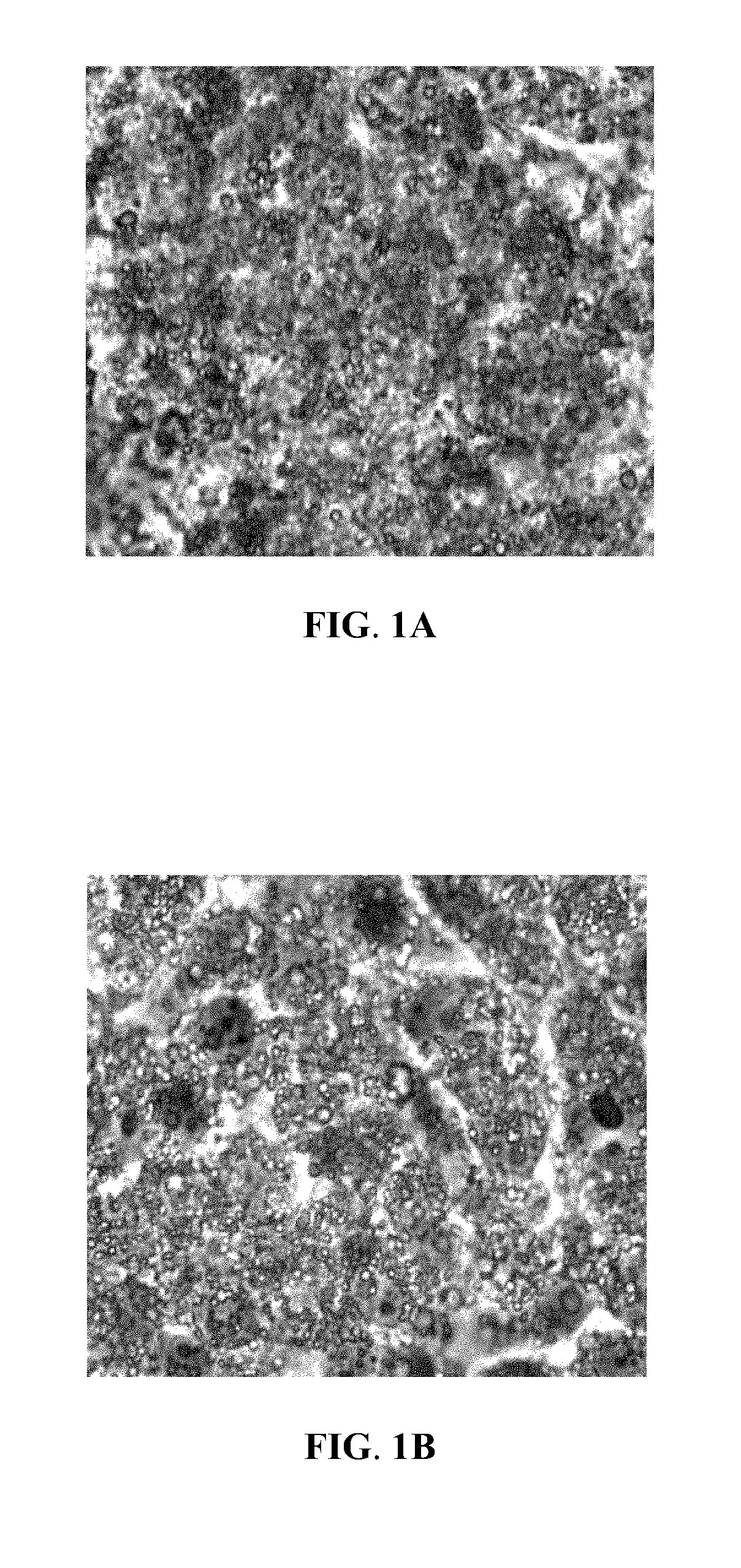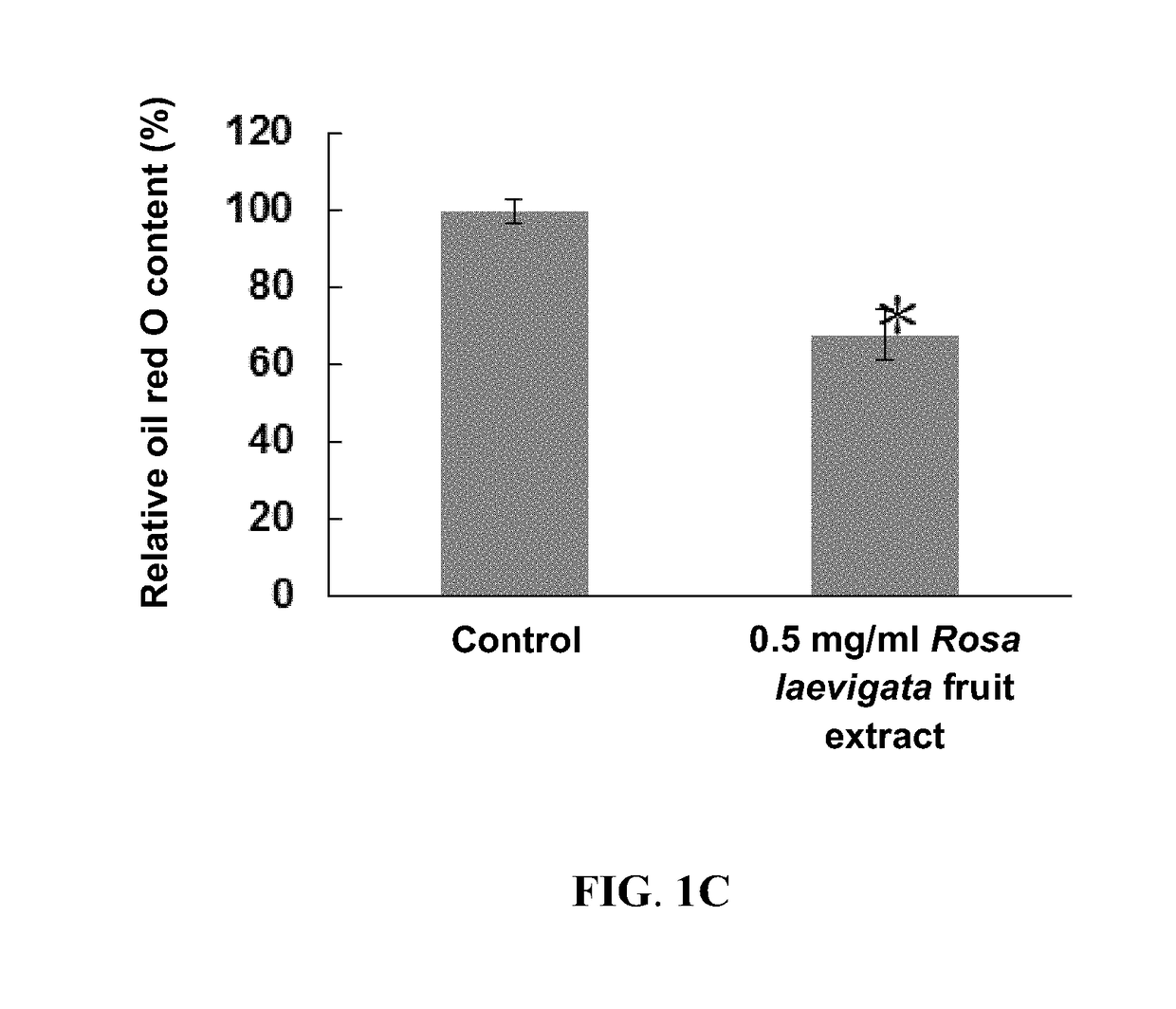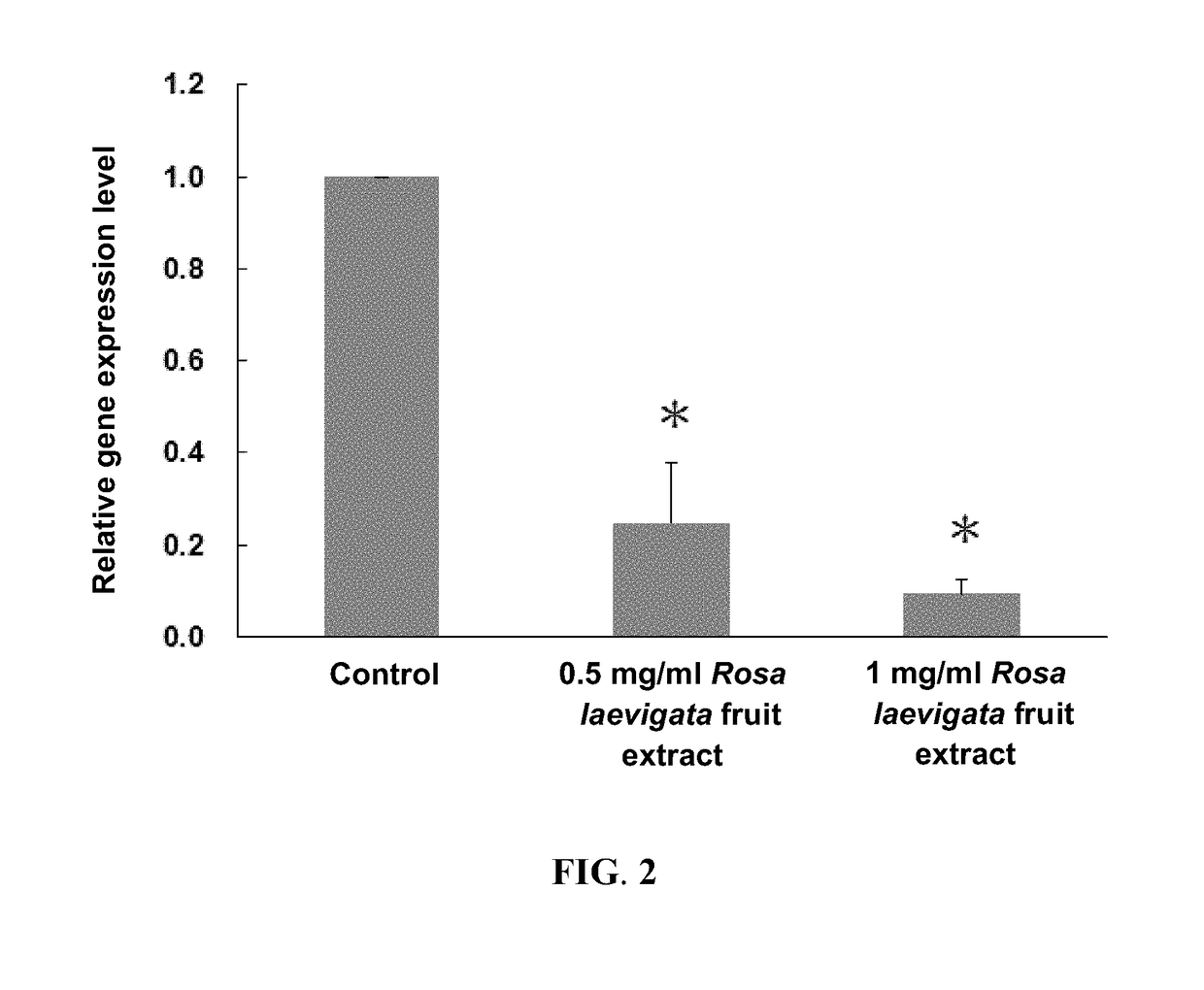Preparations of rosa laevigata fruit extracts and uses thereof for regulation of cd36, apoa1, and srb1
- Summary
- Abstract
- Description
- Claims
- Application Information
AI Technical Summary
Benefits of technology
Problems solved by technology
Method used
Image
Examples
example 1
[0029]Preparation of Rosa laevigata Fruit Extract
[0030]First, the fruit of Rosa laevigata, which has a diameter of 2-6 cm, is washed, air-dried, and ground with a homogenizer. Next, the Rosa laevigata fruit homogenate is extracted using water, alcohol, or a mixture of water and alcohol as the solvent. The liquid-to-solid ratio of the solvent to the Rosa laevigata fruit homogenate is from 20:1 to 1:1. The extraction temperature ranges from 50° C. to 100° C., preferably from 70° C. to 90° C. In one embodiment, the time for extraction is from 0.5 to 3 hours.
[0031]After the abovementioned extraction, the Rosa laevigata fruit extract is cooled to room temperature and may be further processed by centrifugation at 800 to 1300 rpm for 5 to 10 minutes at 15° C. to 25° C. to obtain a supernatant. The supernatant may be filtered through a 400 mesh filter to remove residual solids. The filtered Rosa laevigata fruit extract may further be concentrated under reduced pressure (less than 1 atm) at ...
example 2
[0032]Rosa laevigata Fruit Extract Reduces Lipid Accumulation in Liver Cells
[0033]In order to examine the effect of the Rosa laevigata fruit extract of the present invention on liver lipid content, the change in lipid content of human HepG2 cells was analyzed by oil red O staining after treatment with the Rosa laevigata fruit extract. HepG2 cells were first seeded in 6-well plates at 5×105 cells / well and cultured at 37° C. Next, the cells were treated with DMEM containing 0.5 mg / ml Rosa laevigata fruit extract and 2% FBS. After 24 hours, the medium was discarded and replaced with DMEM containing BSA-conjugated oleic acid, 2% FBS, and 1% penicillin / streptomycin, and the cells were treated with 0.5 mg / ml Rosa laevigata fruit extract for 24 hours. Finally, the medium was removed, and the cells were washed with PBS and stained with oil red O. The HepG2 cells treated similarly but without the Rosa laevigata fruit extract were used as control.
[0034]FIG. 1A and FIG. 1B, respectively, show ...
example 3
[0035]Rosa laevigata Fruit Extract Regulates the Expression of Genes Involved in Lipid Metabolism
3.1 Rosa laevigata Fruit Extract Suppresses the Gene Expression of CD36 in Liver Cells
[0036]In order to investigate the regulatory effect of the Rosa laevigata fruit extract of the present invention on lipid metabolic genes, the change in expression levels of lipid metabolic genes in HepG2 cells after treatment with the Rosa laevigata fruit extract was analyzed by qPCR. HepG2 cells were first seeded in 6-well plates at 1.5×105 cells / well and cultured at 37° C. Next, the cells were treated with 0.5 mg / ml or 1 mg / ml Rosa laevigata fruit extract for 6, 24, or 48 hours, and then collected for qPCR analysis. The HepG2 cells treated with only the extraction solvent for preparing the Rosa laevigata fruit extract were used as control.
[0037]The relative gene expression levels of CD36 in HepG2 cells are shown in FIG. 2, wherein the relative gene expression level is presented as fold change relativ...
PUM
| Property | Measurement | Unit |
|---|---|---|
| Temperature | aaaaa | aaaaa |
| Temperature | aaaaa | aaaaa |
| Temperature | aaaaa | aaaaa |
Abstract
Description
Claims
Application Information
 Login to View More
Login to View More - R&D
- Intellectual Property
- Life Sciences
- Materials
- Tech Scout
- Unparalleled Data Quality
- Higher Quality Content
- 60% Fewer Hallucinations
Browse by: Latest US Patents, China's latest patents, Technical Efficacy Thesaurus, Application Domain, Technology Topic, Popular Technical Reports.
© 2025 PatSnap. All rights reserved.Legal|Privacy policy|Modern Slavery Act Transparency Statement|Sitemap|About US| Contact US: help@patsnap.com



